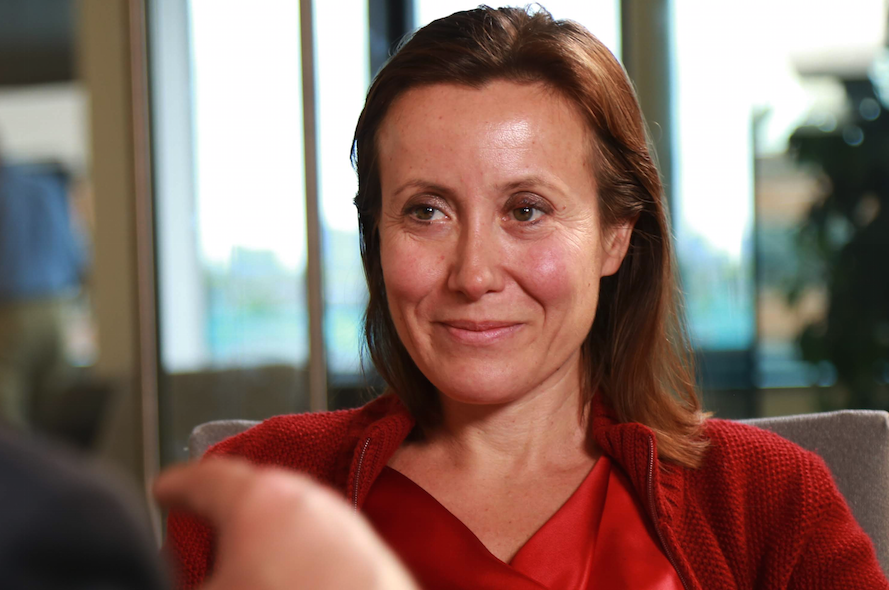 CLOUD
CLOUD
 CLOUD
CLOUD
 CLOUD
CLOUD
Digital transformation is an intimidating process for enterprises looking to keep up with the economic effects of disruptive innovators from Amazon.com Inc. to Uber Technologies Inc. While a successful transformation can lead to a more efficient and profitable business, the pathway is littered with failed attempts and misjudged investments.
Is there a formula companies can follow to ensure a smooth transition? Digital transformation expert Diletta D’Onofrio (pictured), head of digital transformation for cloud integration platform as a service provider SnapLogic Inc., thinks not.
“There is no one recipe,” D’Onofrio said. “It’s about figuring out where the company wants to go. What is the primary objective? Is it sales? Is it new market? Is it new product? And then kind of break it down into tangible chunks … [and] go for the first priority item.”
D’Onofrio sat down with with Jeff Frick (@JeffFrick), host of theCUBE, SiliconANGLE Media’s mobile livestreaming studio, live from SnapLogic’s headquarters in San Mateo, California. They discussed leadership roles and best practice processes in digital transformation. (* Disclosure below.)
As SnapLogic’s head of digital transformation, D’Onofrio is in charge of helping SnapLogic customers on their digital transformation journey. “What we are trying to do is to insert ourselves in the strategic discussion so that the implementation is more solid and secure,” D’Onofrio said. “Integration is at the core of many transformations that we see led by our clients, and it’s not about implementing a software for the most part. There’s always the people processing the technology.”
Many companies are now appointing a staff member who is focused on internal digital transformation, according to D’Onofrio. However, the position is not standardized, and titles she has encountered include head of digital transformation, chief digital officer, and head of application, with some companies even assigning the role to the chief marketing officer.
Who these staff members report to also varies, with some accountable to the chief information officer while others are directly under the chief executive officer, a fact that emphasizes “the importance of the program and the importance of the targets associated with this program,” according to D’Onofrio.
While there is no magic formula, the ability to implement change incrementally, prioritizing and keeping the momentum going while staying flexible, is essential for a successful transition, D’Onofrio explained.
“If the scope is too large, and the roadmap is fixed over three or five years, given the speed of change in technology it is very difficult to achieve those goals. … So it’s much better to have a more agile mentality and maybe plan a year ahead,” she concluded.
Watch the complete video interview below, and be sure to check out more of SiliconANGLE’s and theCUBE’s coverage of the SnapLogic Innovation Day event. (* Disclosure: TheCUBE is a paid media partner for the SnapLogic Innovation Day event. Neither SnapLogic Inc., the event sponsor, nor other sponsors have editorial control over content on theCUBE or SiliconANGLE.)
Support our open free content by sharing and engaging with our content and community.
Where Technology Leaders Connect, Share Intelligence & Create Opportunities
SiliconANGLE Media is a recognized leader in digital media innovation serving innovative audiences and brands, bringing together cutting-edge technology, influential content, strategic insights and real-time audience engagement. As the parent company of SiliconANGLE, theCUBE Network, theCUBE Research, CUBE365, theCUBE AI and theCUBE SuperStudios — such as those established in Silicon Valley and the New York Stock Exchange (NYSE) — SiliconANGLE Media operates at the intersection of media, technology, and AI. .
Founded by tech visionaries John Furrier and Dave Vellante, SiliconANGLE Media has built a powerful ecosystem of industry-leading digital media brands, with a reach of 15+ million elite tech professionals. The company’s new, proprietary theCUBE AI Video cloud is breaking ground in audience interaction, leveraging theCUBEai.com neural network to help technology companies make data-driven decisions and stay at the forefront of industry conversations.